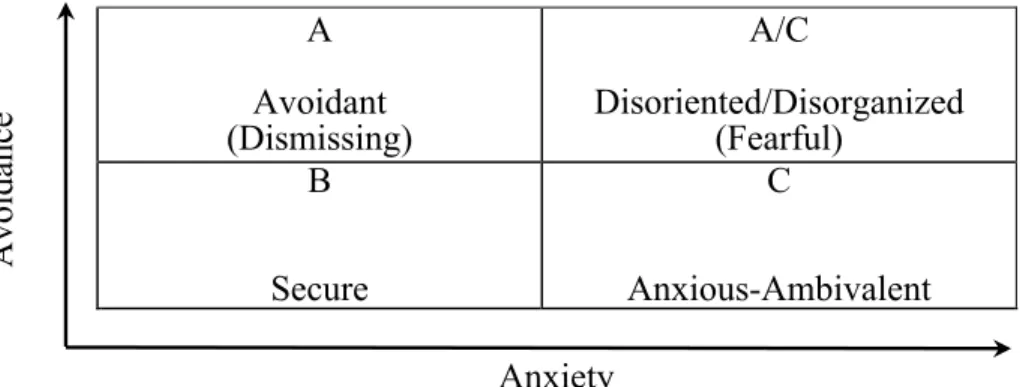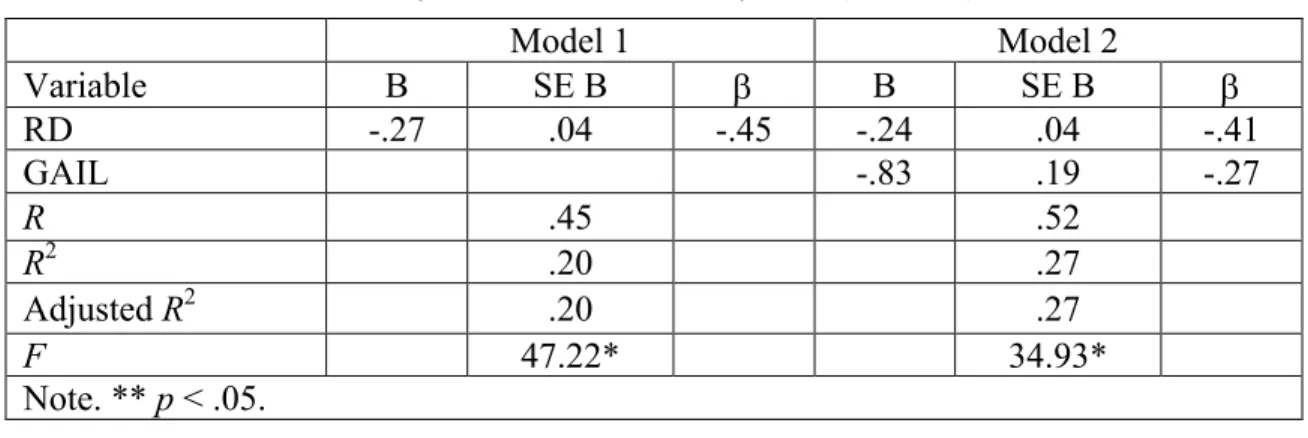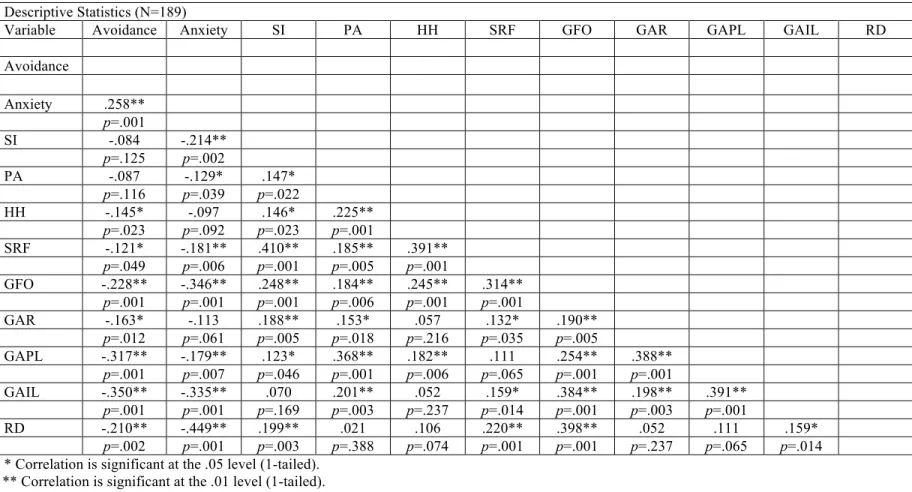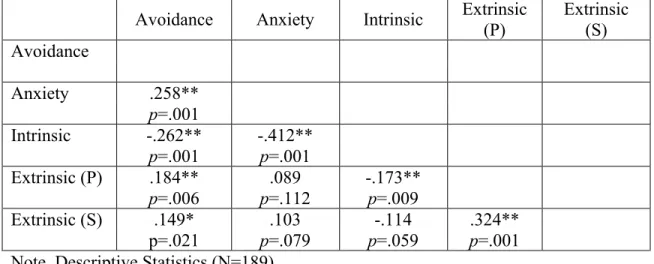In essence, attachment theory has been one of the most researched constructs in the history of psychology. In the Garden man was prosperous while he walked with God in the cool of the morning (see Gen 3:8). Ainsworth et al., Patterns of Attachment: A Psychological Study of the Strange Situation (New York: Routledge, 2015), xxv.
Before that, however, one must understand the infrastructure, which begins with attachment theory's view of the world. In secular attachment-focused psychology, the core of the personality is the drive for attachment.
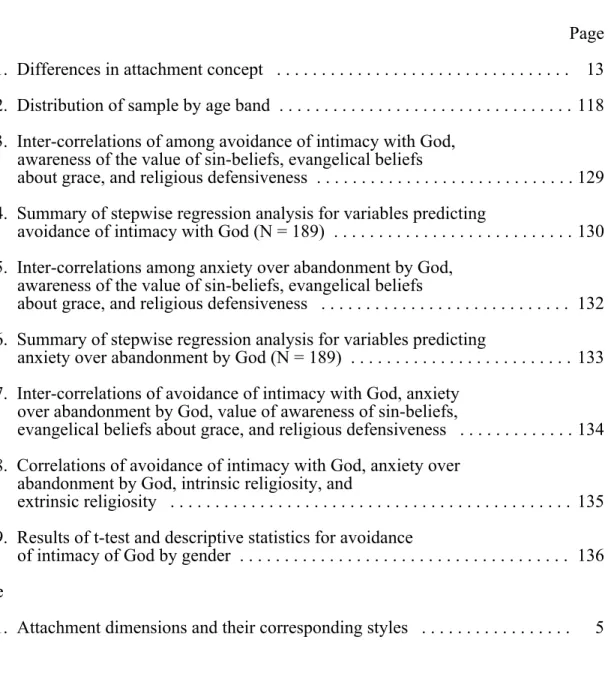
METHOD
This score is the result of the difference in the median score on OBS minus one standard deviation (rounded). This exclusion resulted in data from 24 participants of the original 213 not being included in the following analysis. The AGI measures attachment to God in two dimensions: Intimacy Avoidance (fourteen items) and Fear of Abandonment (twelve items).6 The original Fear of Abandonment subscale contained fourteen items; however, the authors discovered that two of the items (14 and 16) “originally prepared for Avoidance.
Fourth, awareness of the value of sin beliefs was measured with the Beliefs About Sin Scale (BAS). Watson et al., "Beliefs About Sin: Adaptive Implications in Relationships with Religious Orientation, Self-Esteem, and Measures of the Narcissistic, Depressed, and Anxious Self," Education 1, no. As a result, it was concluded that the RGS, DTS and BAS scales were suitable instruments for assessing the construct awareness of the value of sin.
First, this study was correlative in that it sought to determine whether significant relationships exist between attachment to God, awareness of the value of sin beliefs, evangelical beliefs about grace, and religious defenses. Second, this study was also causal-comparative in that it examined the effect of the independent variables 'awareness of the value of sin beliefs', 'evangelical beliefs about grace' and 'religious defensiveness' (and their corresponding subscales) on the dependent variables of "avoidance of intimacy with God" and "anxiety about abandonment of God". Second, an analysis was performed to determine the inter-correlations between fear of abandonment by God, awareness of the value of sin beliefs, evangelical beliefs about grace, and religious defenses.
A fourth analysis was conducted to discover the interrelationship between evangelical beliefs about grace and awareness of the value of sin-faith. After evaluating the correlation analyses, it was decided to test the relationship between avoidance of intimacy with God and awareness of the value of sin-faith, evangelical beliefs about grace and religious defensiveness, a multiple linear regression analysis was performed. In the analysis, a stepwise regression was performed on the statistically significant subscales of the Beliefs of Sin scale (i.e., self-improvement, perfectionism avoidance, healthy humility, and self-reflective functioning), Beliefs of Grace scale (i.e., graceful forgiveness orientation, graceful acceptance of responsibility, graceful avoidance of personal legalism and graceful avoidance of interpersonal legalism) and the total score on the religious defense instrument.
Of the scales tested, graceful avoidance of interpersonal legalism, graceful avoidance of personal legalism, and religious defensiveness were included in the analysis. In the analysis, stepwise regression was performed on the statistically significant subscales of the scale of beliefs about sin, the scale of beliefs about grace, and the total score on the religious defense instrument. Of the scales tested, religious defensiveness and graceful avoidance of interpersonal legalism were included in the analysis.
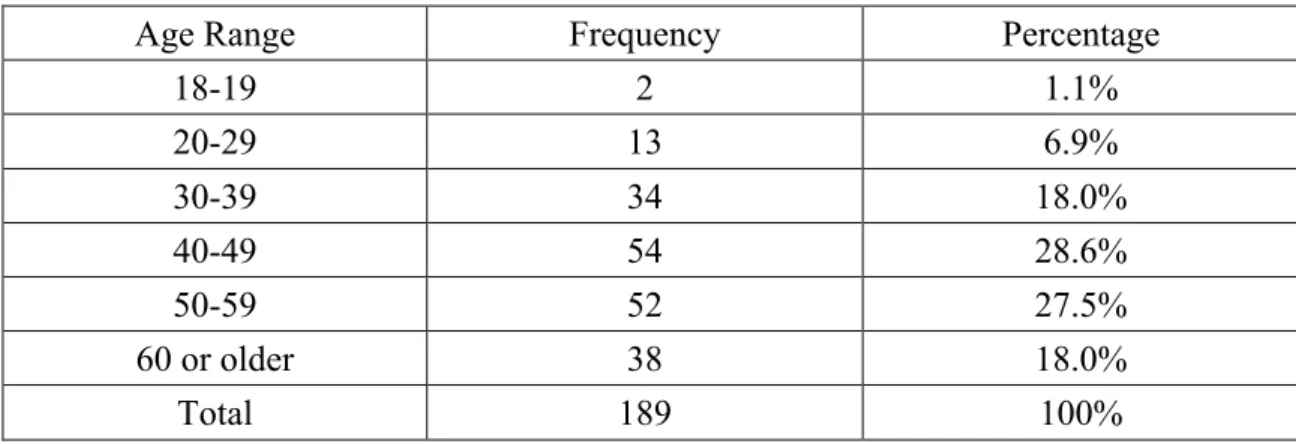
RESULTS
Intercorrelations between avoidance of intimacy with God, realization of the value of sin beliefs, evangelical beliefs about grace, and religious defenses. At that time, gracefully avoiding interpersonal legalism entered the regression equation and was significantly related to avoiding intimacy with God F p < .001. The multiple correlation coefficient was 0.35, indicating that about 12.3 percent of the variance of the score for avoidance of intimacy with God can be explained by the graceful avoidance of interpersonal legalism.
1 In table 3, avoidance is avoidance of intimacy with God; sin is awareness of the value of sin convictions; grace is evangelical beliefs about grace; defense is religious defense. At step 2 of the analysis, graceful avoidance of personal legalism was added to the regression equation along with graceful avoidance of interpersonal legalism. The multiple correlation coefficient as .40, indicating that approximately 16.1 percent of the variance of avoiding intimacy with God can be accounted for by graceful avoidance of interpersonal legalism and graceful avoidance of personal legalism.
The multiple correlation coefficient was .43, indicating that approximately 18.3 percent of the variance in avoiding intimacy with God could be accounted for by these three variables. In light of this regression analysis, pleasant avoidance of interpersonal legalism, graceful avoidance of personal legalism, and religious protection were significant predictors of avoidance of intimacy with God. Individuals with greater avoidant attachment to God reported lower levels of legalism avoidance and religious protection.
In Step 2 of the analysis, graceful avoidance of interpersonal legalism was added to the regression equation along with religious defense. Intercorrelations of avoidance of intimacy with God, anxiety about abandonment by God, value awareness of sin beliefs, evangelical grace beliefs, and religious defense. The analysis revealed a significant but weak negative association between avoidance of intimacy with God and intrinsic religiosity (r = -.262, p <.001, one-tailed).
Individuals with higher levels of reported avoidance of intimacy with God reported lower levels of inner trust. Correlates of avoidance of intimacy with God, anxiety about abandonment by God, intrinsic religiosity, and extrinsic religiosity. Analysis revealed a weak, positive relationship between avoiding intimacy with God and anxiety about being abandoned by God (r=.258, p<.001, one summary).

DISCUSSION
Kirkpatrick, "Two Dimensions of Connection to God and Their Relation to Affect, Religiosity, and Personality Constructs," Journal for the Scientific Study of Religion 29, no. 31 Richard Beck and Angie McDonald, "Attachment to God: The Attachment to God Inventory, Tests of Working Model Correspondence, and an Exploration of Faith Group Differences," Journal of Psychology and Theology 32, no. This dissertation examined the relationships between connection with God and awareness of the value of sin beliefs, evangelical beliefs about grace, and religious protection.
Connection to God: The Connection to God Inventory, Tests of Working Model Correspondence, and an Exploration of Faith Group Differences.” Journal of Psychology and Theology 32, no. Examining a hypothesized relationship between connection to God and scrupulousness.” Psychology of religion and spirituality 6, no. Connecting with God, Spiritual Coping, and Alcohol Use.” International Journal for the Psychology of Religion 20, no.
Attachment to God and Eating Disorder Tendencies: The Mediating Role of Social Comparison." Psychology of Religion and Spirituality 6, no. Examining Attachment to God and Health Risk Behavior in College Students." Journal of Religion and Health 51, no. Back to the basics in relation to God: Revisiting theory in Light of Theology." Journal of Psychology and Theology 35, no.
The impact of child-parent attachment, attachment to God and religious orientation on psychological adjustment." Journal of Psychology and Theology 37, no. Saving Grace: The role of attachment to God in the relationship between adult attachment patterns and bereavement among the elderly." Ph.D. Two dimensions of attachment to God and their relationship to affect, religiosity and personality constructs." Journal for the Scientific Study of Religion 41, no.
The Psychometric Study of the Attachment to God Inventory and the Brief Religious Coping Scale in a Taiwanese Christian Sample.” Ph.D. This pilot study investigated the possible relationships between attachment to God and Christian faith and life among a small sample of evangelical Christians. The study examined the relationships between attachment to God, awareness of the value of sin beliefs, beliefs about sin and levels of religious defense.
